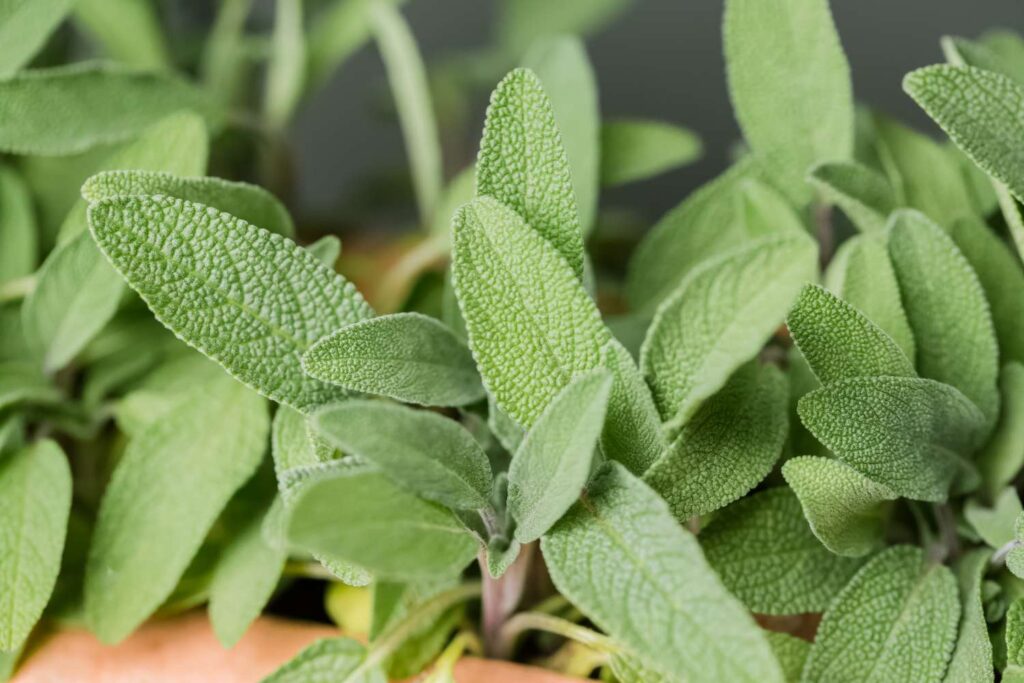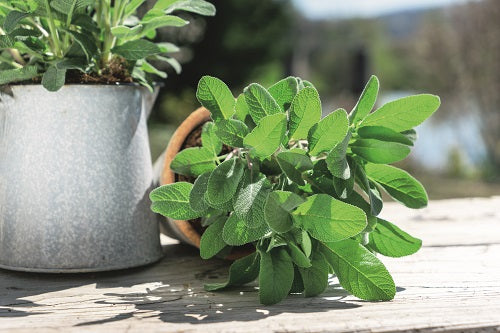Welcome
Sage (Salvia officinalis) is a perennial herb celebrated for its fragrant leaves and healing properties. Widely utilized as a culinary herb, it also offers notable health benefits and holds historical significance. This guide delves into sage, exploring its uses and advantages.
Background and Origin
Sage, cherished since ancient times by Greeks and Romans, was esteemed for its medicinal benefits and culinary uses. During the medieval period, it played a crucial role in European medicine and cuisine. Although native to the Mediterranean, sage is now cultivated globally.
Nutritional Information
Sage is abundant in essential nutrients, such as:
Vitamins: Rich in Vitamin K, Vitamin A, and Vitamin C.
Minerals: Rich in calcium, magnesium, potassium, and iron.
Antioxidants: Abundant in flavonoids and phenolic compounds
Essential Oils: Comprising thujone, cineole, and camphor.

Wellness Advantages
Anti-inflammatory Benefits: Sage contains compounds that alleviate inflammation, assisting in managing chronic conditions such as arthritis.
Digestive Health: Enhances digestion by stimulating bile production, alleviating bloating, and easing indigestion.
Cognitive Enhancement: Sage is renowned for boosting memory and cognitive abilities, frequently utilized as a natural treatment for cognitive impairments.
Antioxidant Power: Sage’s antioxidants fight oxidative stress, lowering the risk of chronic illnesses.
Oral Health: Sage’s antimicrobial qualities aid in combating oral infections and promoting overall dental hygiene.
Menstrual Health: Sage aids in easing menopause symptoms and helps regulate menstrual cycles.

Culinary Applications
Sage enhances a variety of culinary dishes, such as:
Stuffing: A classic component in stuffing for poultry and pork dishes.
Sauces: Enhances the taste of sauces and gravies.
Soups: Enhances the richness of soups and stews.
Tea: Sage tea is a calming herbal beverage offering a variety of health advantages.
Growing and Harvesting
Sage thrives in well-drained soil and a sunny spot. It can be started from seeds or transplants. It needs minimal watering and withstands dry conditions. For optimal flavor and potency, harvest the leaves just before the plant blooms.
Conservation
Preserve sage through drying or freezing. For drying, hang the stems in a cool, dry area until the leaves become crisp. Store the dried leaves in an airtight container, away from sunlight. To freeze, chop the leaves and place them in an ice cube tray with water or oil.
Possible Side Effects
Sage is usually safe for most individuals, but consuming it in large amounts or taking high doses of sage supplements can lead to side effects such as nausea, dizziness, or liver toxicity. Pregnant and breastfeeding women should consult a healthcare professional before using sage for medicinal purposes.
Final Thoughts
Sage is a multifaceted herb with a long history and a wealth of health benefits. Its use in cooking or as a natural remedy offers essential nutrients and healing properties. Adding sage to your diet and wellness practices can enhance overall health and well-being.
